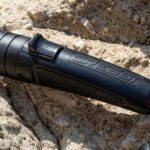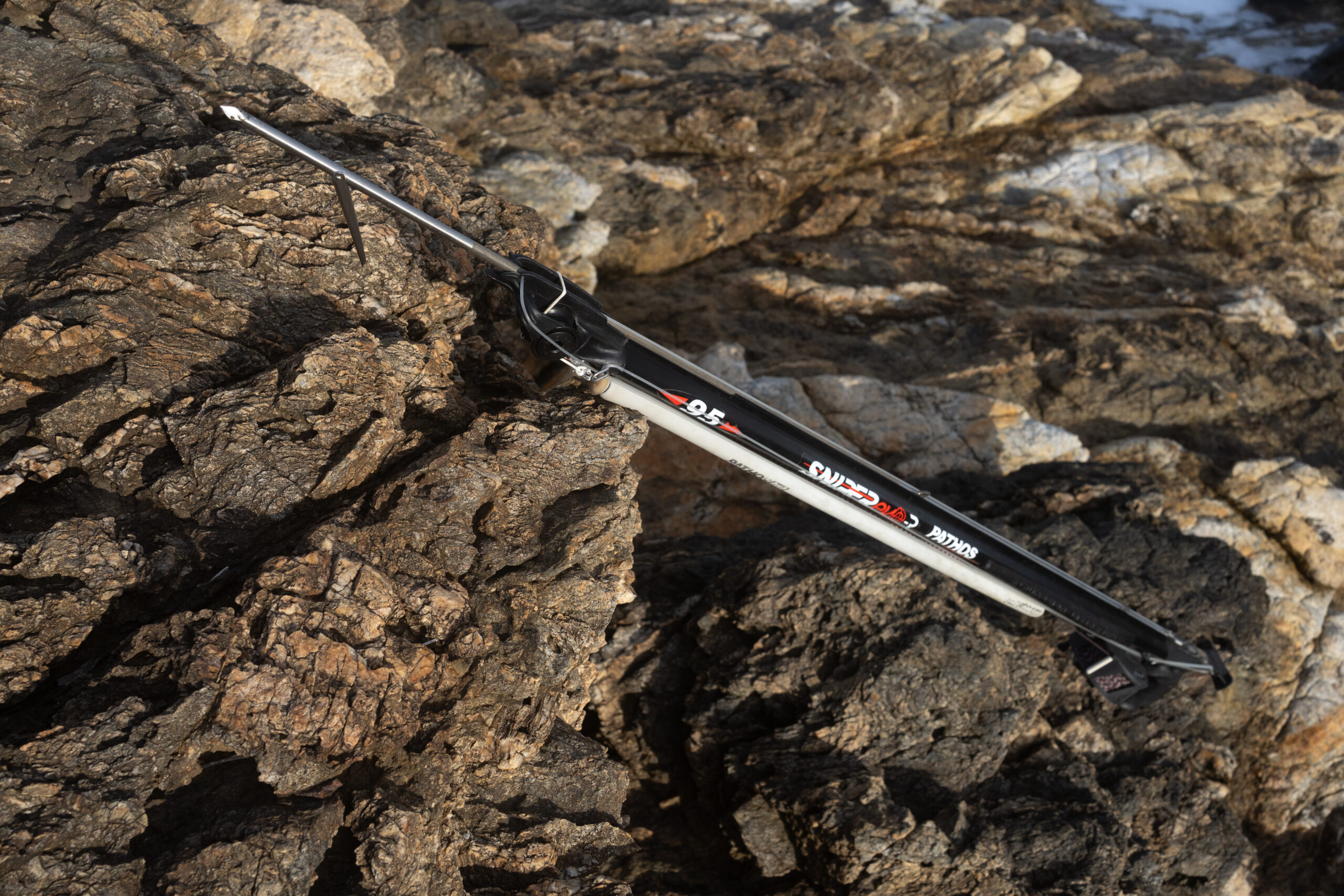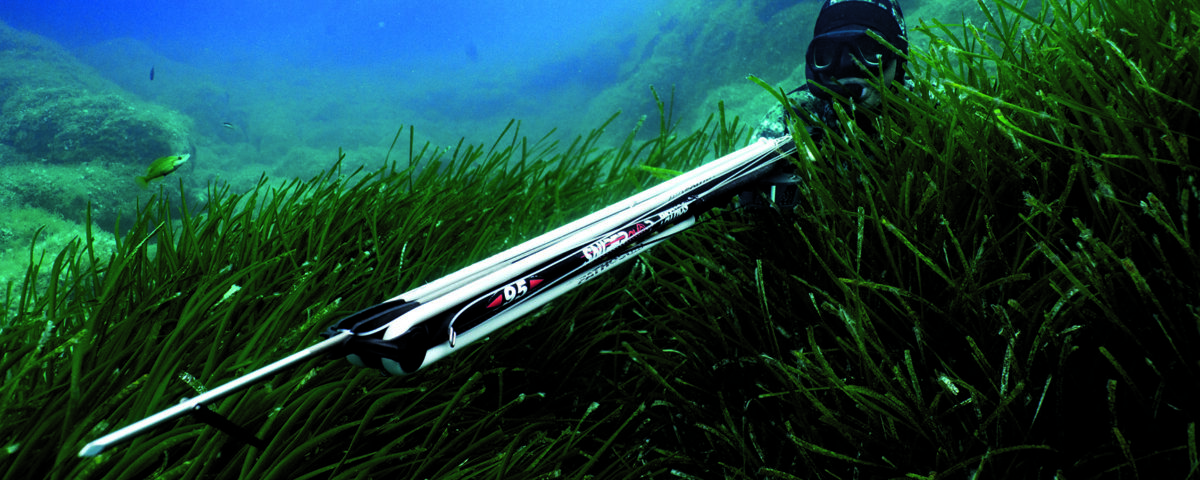Pathos: Sniper Evo Roller 95

CRESSI: HUNT 1600 DIVE LIGHT
16 October 2025A simple but well designed speargun, with a single 16 mm rubber able to propel a 7.5 mm shaft at targets beyond 4 metres
Nilo Mazzarri
September, the month of golden light and the first cool breezes, when the sea empties of boats and fills with silence. The seabed begins to change color, the days shorten, fish become less wary and encounters grow more frequent. It’s a time when patience and precision matter more than brute force.
The Sniper Evo Roller 95 by Pathos immediately presents itself as a compact, powerful gun that is at the same time light, responsive and intuitive. The stiffened oval aluminium barrel with an integrated full‑length closed rail for the shaft provides stability. The muzzle stays small and clean, minimizing water resistance, while the ergonomic handle promotes a natural, instant aim.
The 6.75 mm Sandvik shaft with a three‑prong tip is driven by a pre‑tensioned circular 16 mm rubber, which ensures progressive acceleration for a taut shot with almost no recoil. The roller system with a Dyneema nock releases the shaft in a linear, silent way, preserving residual energy beyond four metres. The lateral release mechanism and the rearward stainless steel trigger offer a short, clean travel with a direct perception of the shot. An integrated chest rest makes loading easier even during repeated sessions.
The company’s stated goal is to combine the ballistic effectiveness of the roller system with an agile, well‑balanced and accurate barrel. That’s why I chose to test it in this context: southern Elba at the end of summer, among slips, shoals and posidonia meadows; visibility is generous and the fish still wary.
A ready‑to‑use machine
The first outing takes place on the points and shoals south of the island, between 12 and 20 metres. September water is still warm and clear, with the oblique sunrays filtering between the rocks.
From the first dives the gun feels balanced: slightly positive trim, quick lateral tracking and surprising stability while aiming. No tendency to rise or to dip, thanks to the compact muzzle and the slim barrel. It transmits both lightness and solidity: I have the sensation of handling a tool that doesn’t need to prove anything, but will quietly do its job.
Here comes the barracuda
I slip down to about 11 metres and settle behind a low rock spur. Visibility is perfect, the sun cuts cleanly and shadows dance on the bottom. After a few moments, the glint of elongated scales breaks the monotony: a school of barracuda patrols the edge of the shoal.
They remain wary, compact, moving like a single creature. With tiny, barely perceptible movements I try to pique their curiosity. The current is in my favour, the roller is already steady, aligned with my sight.
One specimen approaches closer than the others. The shot goes off, the shaft slices the water and hits decisively in the mid‑body. The fish makes a brief run, but the retrieval causes no problems: the reel runs smoothly, following the pull without ever locking up and allows me to manage the catch without stress.
In that moment I understood how essential it is to have a gun that doesn’t move an inch at the moment of firing: pure precision, no compromises.
The bonito on the fall
A few days later, during a slow fall along a bottom of “black and white” — alternating patches of sand and algae — I prepare to ambush gray mullet. The water is still, the descent silent.
Suddenly, a new vibration: a small school of bonito enters the scene, nervous and curious. The fish move fast, slicing the light, circling around me.
The roller is neutral in my hand, ready. A bonito breaks off, approaching too fast. There’s no time to calculate: instinctive, on the fly. The shaft slips away fast and true, turning a reflex into reality. The shot doesn’t displace me, it doesn’t alter my line of aim. The animal reacts with powerful, nervous runs, but the reel follows every surge perfectly, letting the tension be absorbed progressively. It’s a short, intense action that confirms the responsiveness of this gun: instinct and reliability, without hesitation.
Gray mullet and seabream on posidonia edges
Autumn brings ideal conditions for my favourite hunts: the edges of posidonia meadows. The green meadows break into patches of bright sand. It’s here that gray mullet and seabream move cautiously, using the light to camouflage.
I lie in wait along a sandy edge, body relaxed, roller parallel to the bottom. Time passes slowly, the sea seems suspended. After a while, a gray mullet emerges from the edge, curious but cautious.
The gun is motionless, steady as if it were a natural extension of my arm. The trigger is smooth, almost imperceptible: the shaft reaches the target, passing through without issue. We’re over four metres away. In these situations the roller shows all its quality: it’s not speed that counts, but the ability to remain neutral, silent and ready until the decisive moment.
Conclusions
The Sniper Evo Roller 95 is a gun that surprises for the maturity of its design. It has no excesses or unnecessary complications. Once in the water, it does what it promises: it shoots straight, powerful and quietly. The single‑rubber roller system makes loading quick and intuitive, without penalizing range. The grip ergonomics, the linearity of the inverted trigger and the stability of the oval barrel complete a really well‑balanced package. It’s perfect for hunting on the drop, on the fall and along edges, less suited to hunting in caves or in turbid water. But in its natural field it’s a reliable, immediate tool, capable of turning every opportunity into a real shot.
It’s a gun that doesn’t seek to amaze — a solid, concrete, no‑frills weapon. When the right moment comes, it answers without hesitation. A companion that doesn’t betray you and that in the heart of September knows how to deliver the right capture.



